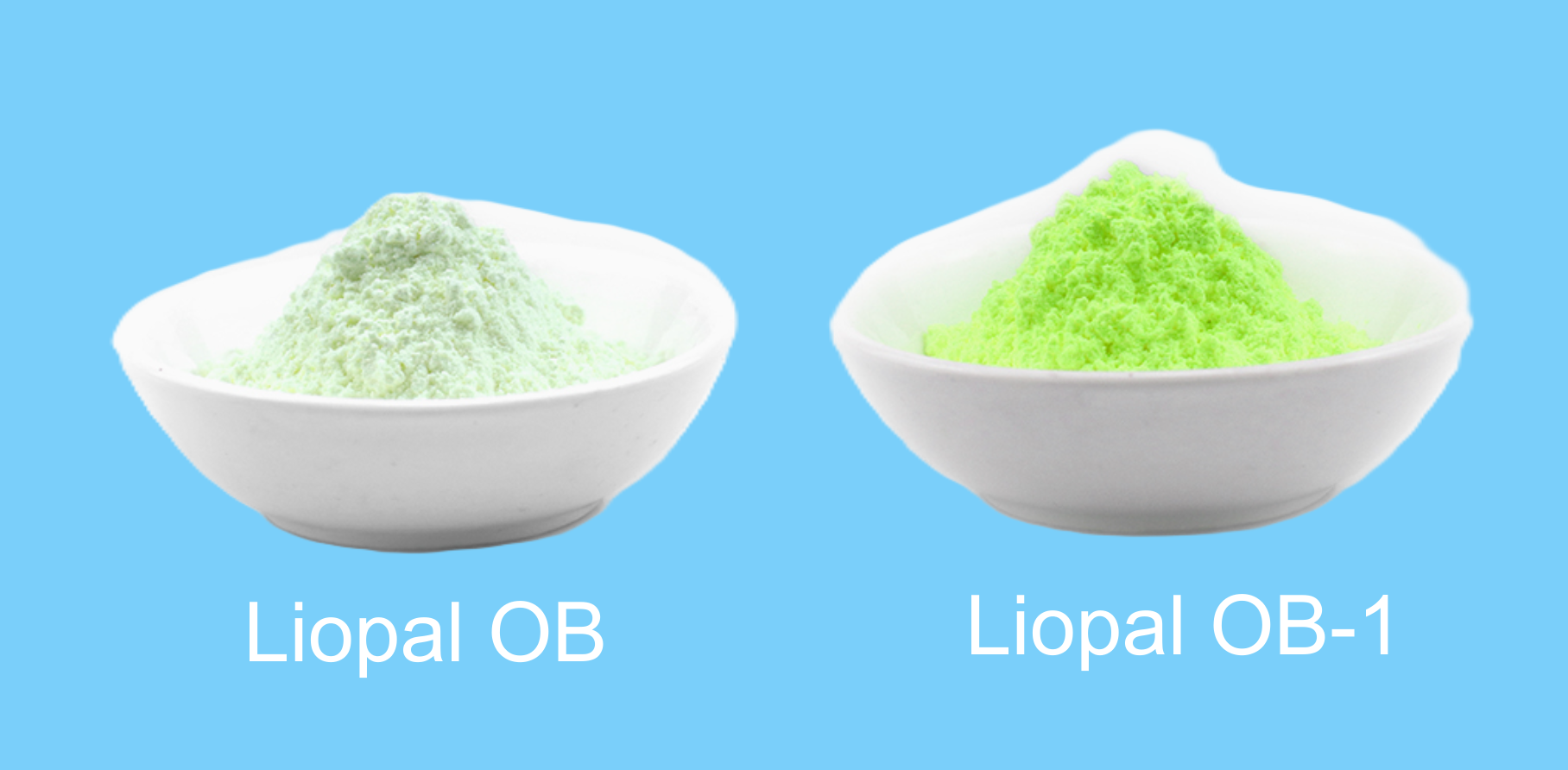LIFTCHEM-UV Curing Raw Materials, Pharmaceutical Intermediates

Optical brightener Liopal OB and Liopal OB-1 are two kinds of brightener often used in coating and plastic industry, although they have similar effects, but there are significant differences in many aspects. Here is a detailed comparison of the two:

I. Molecular formula and chemical structure
Optical Brightener Liopal OB:
Cas No.: 7128-64-5, with the formula C26H26N2O2S, is also known as 2, 5-bis -(5-tert-butyl-2-benzooxazolyl) thiophene or FBA184.
Optical Brightener Liopal OB-1:
Cas No.:1533-45-5, molecular formula C28H18N2O2, also known as 2,2-(4, 4-stilbenyl) dibenzoxazole, fluorescent whitener 393.
2. Appearance and color
Optical Brightener Liopal OB: The appearance is light yellow powder, the color is more uniform.
Optical Brightener Liopal OB-1: There are two colors, one is Liopal OB-1 yellow (color light is blue violet), and the other is Liopal OB-1 green (color light is blue). In the plastics industry, the use of Liopal OB-1 green is more.
Third, melting point and heat resistance
Optical Brightener Liopal OB: melting point between 196~203℃, has good heat resistance, decomposition temperature greater than 220℃.
Optical Brightener Liopal OB-1: Melting point between 355~360℃, has excellent thermal stability.
4. Application and effect
Optical Brightener Liopal OB:
Can be used for thermoplastic, such as PVC, PE, PP, ABS, PS and other plastic products brightening and brightening.
Excellent heat resistance, light resistance is also better.
It can be used for whitening of some fibers, paints, coatings, high-grade photo paper, ink or for anti-counterfeiting marks.
It has a remarkable effect on the brightening of transparent plastics, and has good light transmission, dispersion and weather resistance.
Optical Brightener Liopal OB-1:
It is especially resistant to high temperature and is mainly used for whitening by hot melt rolling dyeing.
It is suitable for whitening of polyester fiber and the blended fabric of polyester and cotton and other fibers.
Can be used for ABS, PS, HIPS, PA, PC, PP, EVA and hard PVC plastic whitening.
The whiteness of polyamide fiber, nylon and polyester can also be significantly improved after the addition of Liopal OB-1.
When Liopal OB-1 is added to recycled polyester waste, bottles and slices, the recycled material will appear whiter and the color will become more consistent across different recycled materials.
5. Dispersion and stability
Optical Brightener Liopal OB: It has good dispersion and stability, and is not easy to appear early yellowing phenomenon, so it is recommended to use Liopal OB in ink coatings.
Optical Brightener Liopal OB-1: good dispersion, can be added during post-processing or polymerization, the whiteness of the brightener is high, and has excellent heat and weather resistance.
6. Price and choice
Price: Liopal OB is more expensive than Liopal OB-1, and many manufacturers prefer Liopal OB-1 based on cost considerations.
Selection: There are significant differences between Liopal OB and Liopal OB-1 in molecular formula, appearance, melting point, dispersion and stability, application field and price. When choosing which whitening agent to use, it is necessary to consider the specific product needs, production process and cost budget.